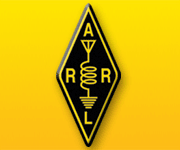Amateur Radio Contact with ISS Takes Place in Conjunction with WRC-15
An Amateur Radio contact between students at the International Telecommunication Union (ITU) Headquarters Amateur Radio club station and two crew members of the International Space Station helped to kick off World Radiocommunication Conference 2015 (WRC-15). The international gathering is taking place in Geneva, Switzerland, until November 27. The contact took place using ITU Amateur Radio club station 4U1ITU, which is using the call sign 4U1WRC for the duration of the conference. Students from Institut Florimont spoke with astronauts Kjell Lindgren, KO5MOS, and Kimiya Yui, KG5BPH, who were using the Amateur Radio station in the ISS Columbus module, OR4ISS.
The Amateur Radio on the International Space Station (ARISS) program established the first permanent Amateur Radio presence in space 15 years ago. The inaugural ARISS contact took place on December 21, 2000, between a member of the ISS Expedition 1 crew and youngsters at Luther Burbank Elementary School near Chicago. Several pupils and a teacher got to chat with ISS Commander William “Shep” Shepherd, KD5GSL.
The ARISS program lets students around the world experience the excitement of talking directly with crew members of the ISS, inspiring them to pursue interests in careers in science, technology, engineering, and math, and engaging them with wireless technology through Amateur Radio.
Delegations at WRC-15 are considering several issues of importance to the Amateur Service and the Amateur Satellite Service during the month-long gathering. International Amateur Radio Union (IARU) President Tim Ellam, VE6SH/G4HUA, and Vice President Ole Garpestad, LA2RR, are heading the 18-member IARU team. The ITU has acknowledged its close cooperation with the IARU, which was founded in Paris in 1925, and recognizes that IARU speaks for the Amateur Radio community.
The premier item of Amateur Radio interest is Item 1.4, which calls for allocating an appropriate amount of spectrum to the Amateur Service on a secondary basis within the band 5250-5450 kHz. The IARU has called the new band as “a high priority for the Amateur Service” but is not overly confident of getting the new secondary allocation, as there is some opposition. Ellam said the IARU team will put forth its best effort toward gaining a possible allocation near 5 MHz and will follow other developments that may impinge on the Amateur Service and Amateur Satellite Service.
Back






